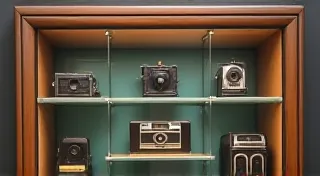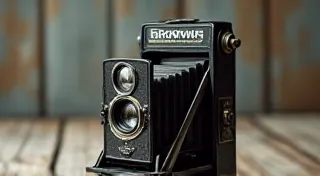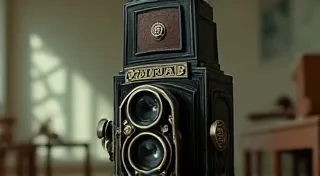Original Brownie Camera Advertising and Packaging
The Brownie camera, introduced by Kodak in 1900, wasn't just revolutionary for its affordability and simplicity; it also benefited from a clever and consistent marketing campaign. Understanding the original advertising and packaging of these cameras provides valuable insight into the cultural impact and enduring appeal of the Brownie. Beyond the cameras themselves, these materials are becoming increasingly sought after by collectors.
Early Advertising: Reaching the Masses
Kodak's initial advertising for the Brownie was brilliantly targeted at families and those who considered themselves "average." The tagline, "You Press the Button, We Do the Rest," was key. It emphasized the ease of use, removing the perceived complexity of photography. Advertisements frequently depicted happy families and children using the Brownie, associating the camera with fun, leisure, and accessible creativity. These were often published in popular magazines and newspapers, reaching a broad audience. Early advertising helped solidify the Brownie's place not just as a camera, but as a cultural phenomenon – something that continues to resonate today and has led to interesting appearances in Brownie cameras in pop culture.
Early ads weren't just about highlighting the camera's ease of use. They often included testimonials from everyday people, building trust and demonstrating the Brownie's ability to capture cherished memories. The visual style of these early ads was also distinctive, often featuring illustrations rather than photographs, contributing to a warm and inviting aesthetic. Kodak understood the importance of not just selling a product, but selling an experience – a moment in time preserved for generations. The approach reflected a wider movement to demystify technology and bring it within reach of the average person, a philosophy that extended to how Kodak presented its broader range of cameras and photographic processes.
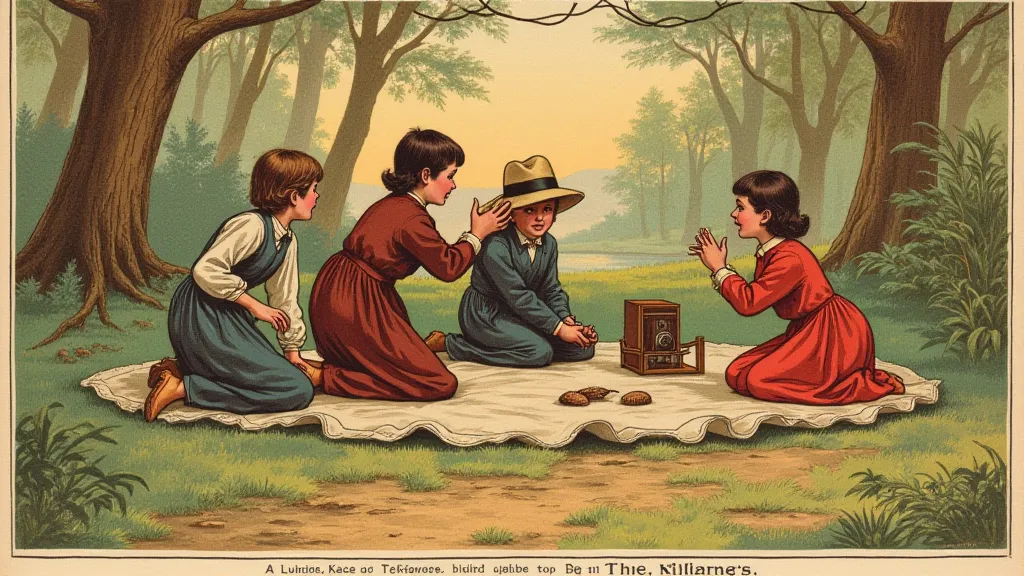
The Evolution of Packaging
The Brownie's packaging also played a critical role in its success. Early Brownies were typically sold in sturdy cardboard boxes, often featuring colorful graphics and detailed descriptions of the camera’s features. The boxes weren't merely functional; they were a vital part of the product's presentation. Different variations of the Brownie, such as the Brownie II, Brownie C, and Brownie Detective, each had distinct box designs that are now valuable collectible items. The sheer variety in Brownie models contributed to a complex and fascinating landscape for collectors seeking authentic packaging.
As the Brownie line expanded, so did the variety of packaging. Some models came in attractive wooden boxes, while others were packaged in more utilitarian cardboard containers. The condition of the original box significantly impacts the value of a Brownie camera today, making a camera in its original box a particularly prized possession. The impact of the war years also influenced the designs and materials used – a fascinating topic for those studying the evolution of Kodak’s production techniques. It’s a testament to the adaptability of Kodak's production and marketing teams, who constantly adjusted to changing conditions.
Collecting Original Materials
For camera collectors, original advertising and packaging are often as desirable as the cameras themselves. These materials provide a tangible connection to the history of the Brownie and offer a glimpse into the marketing strategies of early Kodak. They serve as testament to the enduring appeal of a camera that democratized photography. The subtle differences in tone and image quality across different Brownie models have also intrigued enthusiasts, prompting investigations into the nuances of Kodak's photographic processes - a look into chromatic ghosts and how they define the character of these cameras. These "ghosts," as they’re affectionately known, are subtle imperfections and characteristics that contribute to the unique aesthetic of each camera and its resulting images.
Finding these original materials can be challenging. They frequently surface at antique stores, flea markets, and online auctions. Knowing what to look for – the correct box design, the right advertising materials – is key to building a worthwhile collection. The allure isn't just about owning a piece of history; it's about understanding the context within which that history unfolded. The pursuit of these materials isn't merely about acquisition; it's about connecting with a moment in time and appreciating the craftsmanship and design principles of a bygone era.
Brownie Boxes & Variations
Many collectors specialize in Brownie camera boxes, noting the subtleties in design and printing across different years and models. Variations, such as boxes printed for specific retailers, are particularly sought after. These nuances reflect evolving marketing approaches and distribution networks. The intricacies of distinguishing early production runs from later versions are a constant source of fascination for serious collectors. Examining these variations provides a fascinating window into the evolving landscape of Kodak's marketing and distribution channels, demonstrating the company's responsiveness to market trends and retailer demands.
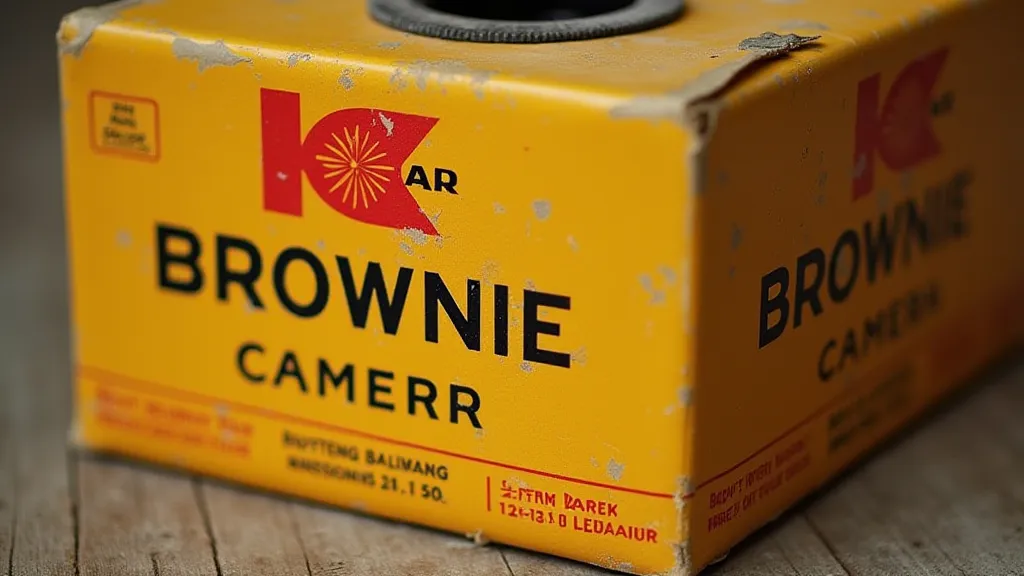
Beyond the Box: Point-of-Sale Displays
Beyond the standard packaging, Kodak also produced point-of-sale displays and promotional materials to showcase the Brownie. These items, often featuring larger-than-life models of the camera or eye-catching slogans, are rarer than the standard boxes and packaging, making them even more valuable to collectors. While most Brownie enthusiasts are familiar with the standard cardboard boxes, the rarer display stands and promotional items offer a tantalizing glimpse into the full breadth of Kodak's marketing efforts. These displays weren’t just about showcasing the camera; they were about creating an experience, a sense of excitement and accessibility that would entice potential customers.
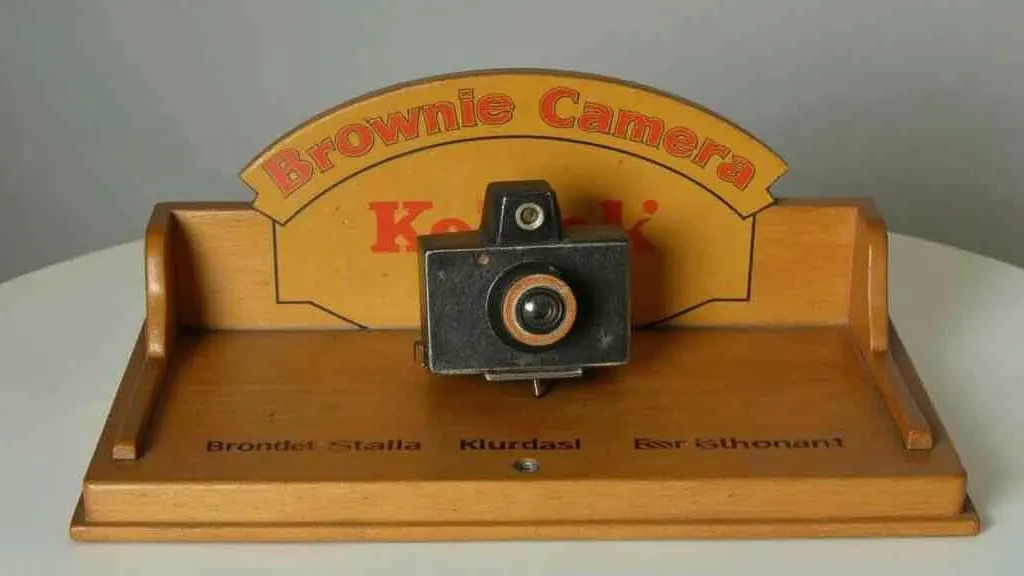
The Brownie’s Legacy & Later Models
The Brownie’s initial success paved the way for numerous iterations and related models. Studying the evolution of the Brownie family – from the early models to the Brownie Star and beyond – provides valuable insight into Kodak’s ongoing efforts to cater to a diverse range of customers. The advancements in technology and design that followed the initial Brownie demonstrate Kodak’s commitment to innovation and its ability to adapt to changing consumer preferences. The Star, for example, represented a significant step forward in both design and functionality, building upon the foundation laid by the original Brownie.
Understanding Kodak’s Marketing Mindset
The advertising and packaging of the Brownie weren’t just about selling cameras; they were about cultivating an image – an image of Kodak as a company that brought photography to the masses. They understood that photography wasn't just about technical proficiency; it was about capturing memories, celebrating family, and sharing experiences. The focus on accessibility and ease of use was a deliberate strategy to broaden the appeal of photography beyond the realm of professionals and enthusiasts. This strategy extended beyond mere product design; it permeated Kodak’s entire corporate philosophy and shaped its interactions with consumers.
The Value of Preservation
The original advertising and packaging of the Brownie cameras are irreplaceable artifacts of photographic history. Preserving these materials isn’t just a matter of collecting; it’s a matter of safeguarding a valuable cultural heritage. As these items become increasingly rare, their importance as historical documents only grows. The meticulous attention to detail in the original designs, from the typography to the illustrations, is a testament to the craftsmanship of the era. These materials offer a window into a time when advertising was an art form, carefully crafted to evoke emotion and create a lasting impression.
Researching and Identifying Variations
For serious collectors, researching and identifying variations of Brownie advertising and packaging is a rewarding but challenging pursuit. Differences in printing techniques, paper stock, and even minor design variations can significantly impact the value and desirability of a particular item. Accessing historical archives and consulting with experienced collectors are invaluable resources in this endeavor. Even understanding the Brownie Reflex’s unique design and packaging contributes to a broader appreciation of the Brownie lineage. The Reflex, with its advanced features and distinct aesthetic, represents a fascinating chapter in the Brownie’s evolution, highlighting Kodak’s ongoing commitment to innovation and pushing the boundaries of photographic technology.
The Brownie’s influence extends far beyond the realm of photography. It helped shape popular culture, democratized image-making, and left an indelible mark on the way we capture and share our memories. The enduring appeal of the Brownie lies not only in its simplicity and affordability, but also in the rich and fascinating history that surrounds it. It was more than just a camera; it was a symbol of a changing world, where technology was becoming more accessible and the power of image-making was being shared with the masses.
The legacy of the Brownie continues to inspire and delight camera enthusiasts and collectors around the world. As we celebrate the enduring appeal of this iconic camera, we also acknowledge the vital role that advertising and packaging played in its remarkable success. The story of the Brownie is a testament to the power of clever marketing, innovative design, and a deep understanding of the human desire to capture and share our most cherished moments.

